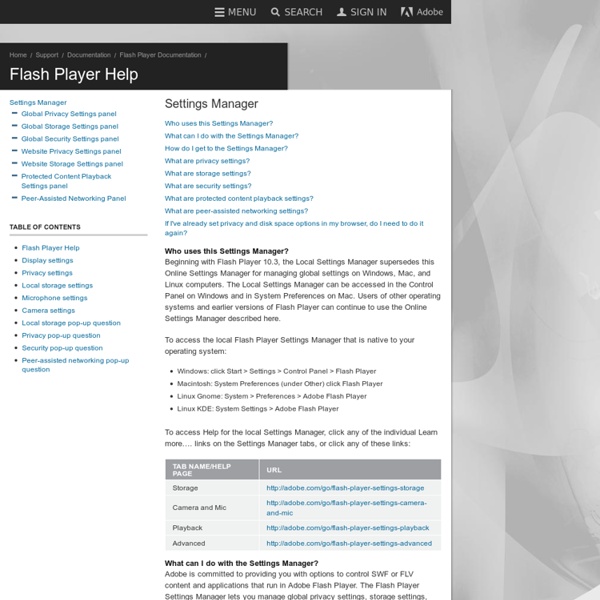Building HTML5 Applications - Practical Cross-Browser HTML5 Audio and Video
When the HTML5 audio and video tags were first introduced, codec and browser incompatibilities made them difficult to use and unrealistic to deploy on large-scale Web sites. The tags were great for companies writing experimental code or doing cross-browser media development, but the HTML5 media API was too unreliable for general use. Today, things are different. Browsers and JavaScript libraries have matured to the point where you can—and should—use HTML5 media as the default for any projects that will display audio and video content. Even retrofitting existing Flash and Silverlight video content for HTML5 playback has become fairly simple. Benefits of HTML5 Media The advantage of using HTML5 for media is that you can leverage your HTML, CSS and JavaScript skills rather than learning Flash or Silverlight. Moreover, media that uses HTML5 video and audio performs better than media played through plug-ins such as Flash or Silverlight, resulting in longer battery life and smoother playback.
ΠΑΙΔΙΚΑ: Ένα σπίτι παραμύθια - Ipolistonkosmo.gr | Εκδηλώσεις για παιδιά στη Θεσσαλονίκη
3 χρόνια στην Αθήνα – 2ος χρόνος στην Θεσσαλονίκη«ΕΝΑ ΣΠΙΤΙ ΠΑΡΑΜΥΘΙΑ»Παιδική Μουσική Παράστασητης Λίνας Νικολακοπούλου και του Σταμάτη Κραουνάκη Από 20 Οκτωβρίου 2013 Η ρυθμική και μελωδική μουσική του Σταμάτη Κραουνάκη βασισμένη σε διάφορα μουσικά μοτίβα, στοιχεία από παλιά λαϊκά τραγούδια, από δημοτικά, από όπερα, και αποτελούμενη και από άλλους ρυθμούς και μελωδίες, το θαυμάσιο λιμπρέτο, οι στίχοι της Λίνας Νικολακοπούλου, ταξιδεύουν τα παιδιά στον ονειρικό κόσμο των παραμυθιών, κατανοώντας έτσι ευκολότερα το μύθο και τα νοήματά του μέσα από μουσικές, λόγια και χρώματα. Τα παιδιά συμμετέχουν διαδραστικά στην παράσταση, τραγουδούν και χορεύουν, κι έχουν την ευκαιρία να ζήσουν τη χαρά της μεταμφίεσης εφόσον τα πάντα διαδραματίζονται επί σκηνής κι έτσι αναπτύσσεται η δημιουργική τους φαντασία.Με την ελπίδα πως τα παιδιά θα μεγαλώσουν ωραία και οι γονείς θα γίνουν πάλι «παιδιά».
Learning Movable Type: Yearly Archives
Movable Type is set up for doing date-based archives by day, week, and month, but not by year. There are a few plugins and methods out there that will help you create a yearly calendar of your archives, for example, Brad Choate's Year Archives in MT Perl script plugin will produce a calendar archive (example). Lummox JR's ArchiveYear plugin will produce a similar calendar (example). I prefer a yearly archive to show a list of entries by month, as I've set up on one of my blogs (example). An archive page like this can be accomplished using the ArchiveYear plugin with some simple changes to the sample code given. 1. 2. In your templates edit window, create a new archive template named "Yearly Archives". Add two blocks of code to replace the section you just removed. Be sure to replace "/path/to/your/archives/%Y/" with the path to your archives. The next bit of code lays out the months and links to the entries: Save your template. 3. For MT 3.2, in your settings window, select publishing.
Installation, réinstallation : les logiciels gratuits pour bien commencer
Google
Tumblr 2012: guide d'utilisation pour un usage professionnel
Εγκέφαλος τραυματισμών Αποκατάστασης - Εγκέφαλος τραυματισμών Resource | BrainLine.org
See all rehabilitation content She sometimes loses her way when she's behind the wheel. Background noise is a constant distraction. What exactly is brain injury rehabilitation? Some brain injury rehabilitation is offered as a program within a hospital or other clinical setting; other types of brain injury rehabilitation might occur on an outpatient basis. Different types of services specific to brain injury rehabilitation Traditional Alternative Medical p rofessionals t ypically i nvolved in b rain i njury r ehabilitation Neuropsychologists Behavioral analysts Speech/language pathologists Cognitive therapists Physiatrists Physical therapists Recreational therapists Occupational therapists Neurologists Neuropsychiatrists The r ehabilitation p rocess During and after the physical recovery from a brain injury, a person may receive various tests that help determine what parts of the brain have been affected . “Brain injury doesn’t mean never,” says Peggi.
La sortie de PHP 5.4
La première version de PHP a été créée en 1994 par Rasmus Lerdorf afin de pouvoir compter le nombre de passages sur son CV en ligne, il l’appelle "Personal Home Page Tools". En juin 1995, le code source du langage est offert au public, ce qui permet à celui-ci de le tester pour en éprouver la fiabilité et l'améliorer. En 1996 sort la deuxième version du langage, un gros travail de réécriture est engagé pour que sa syntaxe ressemble au C et à Perl dans le but de ne pas trop perturber les développeurs venant de ces mondes. C'est aussi à cette période qu'il est envisagé de proposer un support de Windows NT. La version 3.0 introduit, en plus de changements dans son architecture, un nouveau nom : Citation : Histoire de PHP Il fut ainsi renommé tout simplement « PHP », dont la signification devint un acronyme récursif - PHP: Hypertext Preprocessor. C'est également à partir de ce moment que PHP s'est ouvert à Windows, Linux et Mac. private public protected Comment fonctionne PHP ? Les nouveautés <? <?
Ονειροκριτης και Ονειρα



